Trees are some of the most important plants in the world. They provide oxygen, shade, shelter, and wood for buildings. But before these trees can be used for all mentioned, they must grow. However, trees can either grow faster or slower.
The slowest-growing trees take a long time to reach maturity. They can take decades or even centuries to grow to their full height, but they offer advantages over faster-growing trees. Growing the slowest trees has a lot of beneficial offers. They have a long lifespan, meaning you can enjoy them for a long time.
Also, they have low maintenance and require little pruning or watering. Lastly, they are great to plant if you want something that will help keep your yard tidy without requiring extra effort.
This blog post will discuss the slowest-growing trees suitable for growing/planting. So, dive in!
10 Slowest Growing Trees
The trees that grow the slowest can take between 100-1000 years to reach maturity. Examples of such trees are Eastern Hemlock, White Cedar, Japanese Maple, Don Egolf Redbud, Serbian Spruce Tree, Purple Lily Magnolia, etc. The various slowest-growing trees will be discussed in this section.
1. Eastern Hemlock Tree
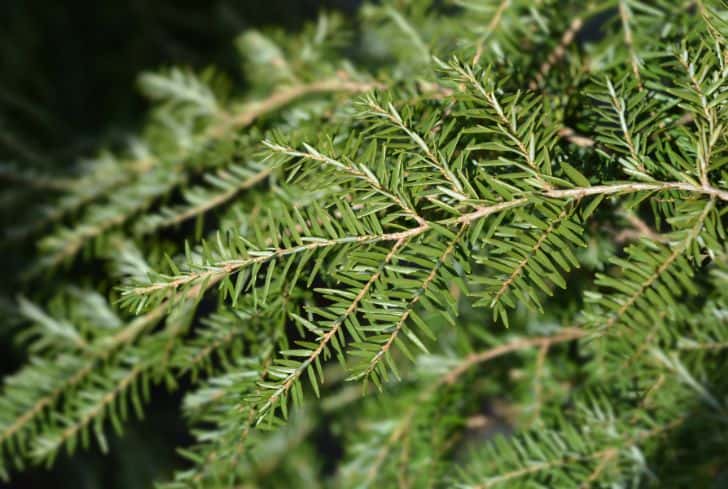
The Eastern hemlock tree is a native of eastern Minnesota, Georgia, and Illinois. The eastern hemlock is a slow-growing tree that can live for hundreds of years. A mature tree may reach 175 feet tall and have a trunk diameter of up to 10 feet.
The eastern hemlock prefers sites with good drainage and cool temperatures, making it well suited to thrive in places like Canada’s northern regions. Eastern Hemlock tree can live up to 800 years.
2. Japanese Maple Trees
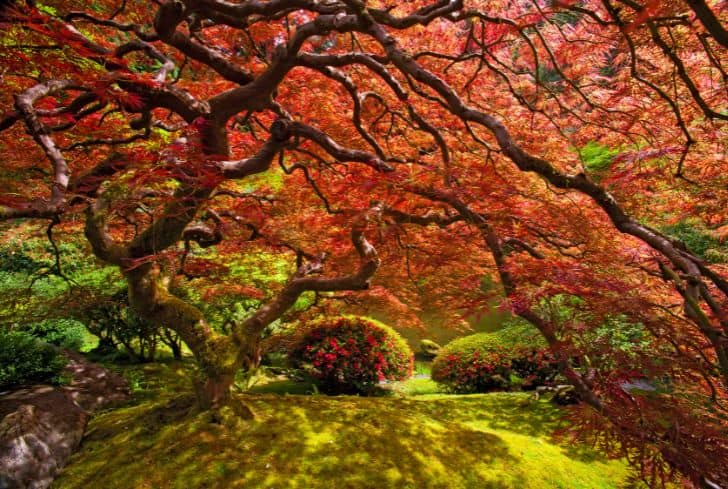
Japanese Maples are slowly growing trees, increasing only a few inches to a foot in height yearly. The tree is deciduous and often planted in parks and gardens for its vibrant fall colors.
Japanese Maples are used for bonsai, and their beautiful leaves during the spring and summer. Also, they are known as the ideal specimen tree.
3. Don Egolf Redbud
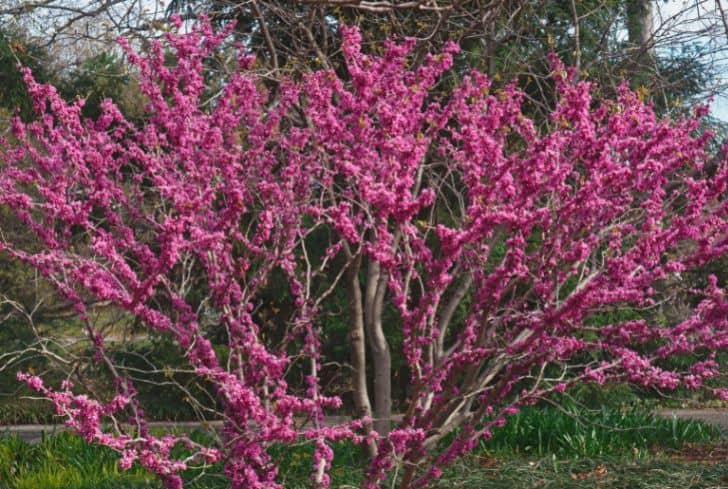
The Don Egolf Redbud is a deciduous flowering tree that grows up to 10 feet tall. It has beautiful pink flowers which bloom in the spring and last for several weeks.
However, its growth rate of about 16 inches per year makes it one of the slowest-growing trees. This tree takes 15 years to reach its initial mature height of about 10 ft (3 m).
4. White Cedar
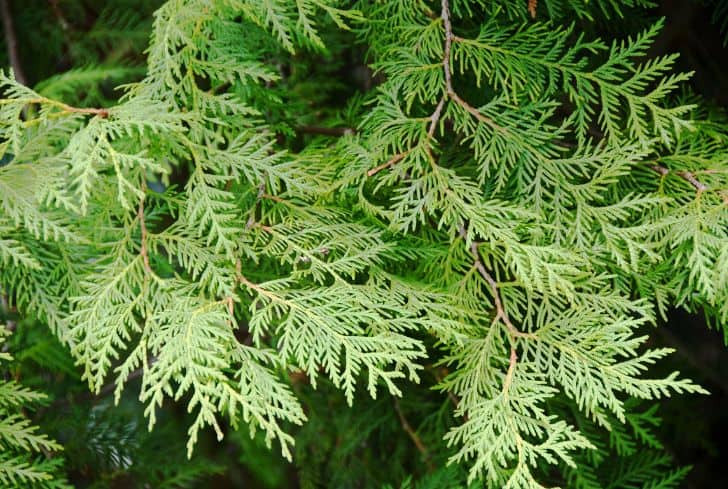
White Cedar is a slow-growing tree. It can grow up to 30 feet tall and live for over 200 years. The tree has a straight trunk and a pyramid-shaped crown and is native to the Cedrus genus.
White Cedar tree prefers moist soil with plenty of sunlight but can tolerate wet soil. They can grow up to 13 to 24 inches in a year, subject to change depending on weather conditions and soil quality.
5. Serbian Spruce Tree
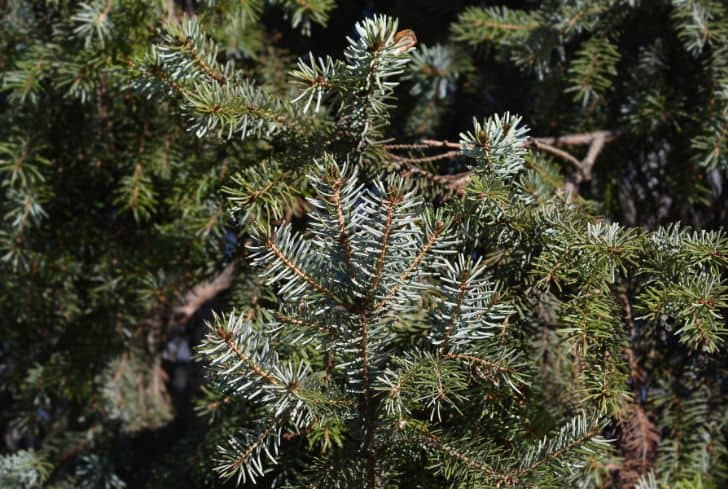
The Serbian spruce is your best bet if you want a tree that grows slowly. This tree can live up to 60 years but only grows up to 30 feet tall. You might be able to plant one of these trees in your backyard and watch it grow into an impressive specimen over time.
In addition, the Serbian Spruce is easy to care for and resistant to disease or pests, making it ideal for novice gardeners who want something low-maintenance but beautiful.
6. Bur Oak Tree
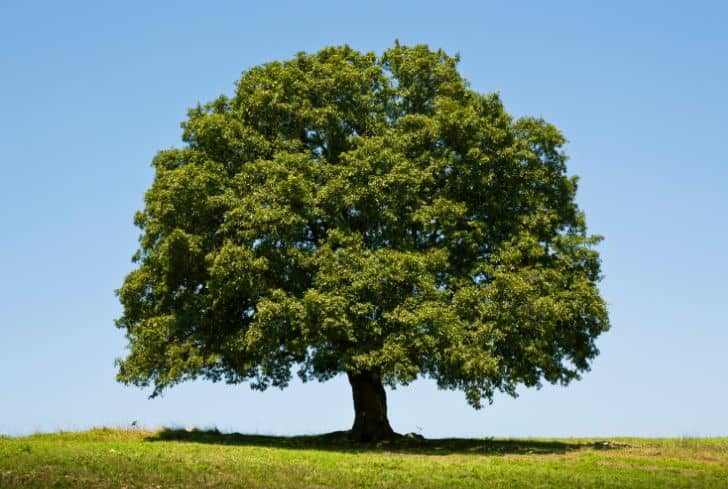
The Bur Oak tree is a slow-growing tree that can live up to 300 years. It grows between 12-24 inches per year, which makes it one of the slowest-growing trees on our list.
The tree is said to be native to North America and can be found in many regions across the continent. It is often used as an ornamental plant in parks and gardens because it flowers in early spring when most other trees are still bare from winter weather.
In addition, the Bur Oak Tree has a thick, rounded canopy that is made up of large leaves and acorns. The Bur Oak Tree grows best in full sunlight and deep, well-drained soil. It is drought-resistant and requires little maintenance; water it during dry spells.
7. Chinkapin Oak
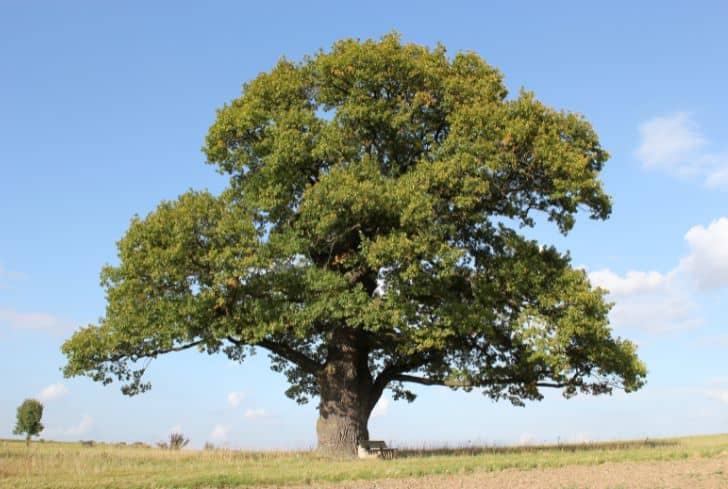
Chinkapin oak is a slow-growing tree whose lifespan extends up to 300 years. It’s an evergreen with thick, heavy branches that grow out of its trunk at different levels. This makes it look like the trunk has many layers, making it attractive.
The bark of this tree is light gray and flaky, while its leaves are dark yellowish green. This species grows best in rocky soil because its shallow roots need good drainage. The growth rate is between 10-24 inches per year.
8. Purple Lily Magnolia
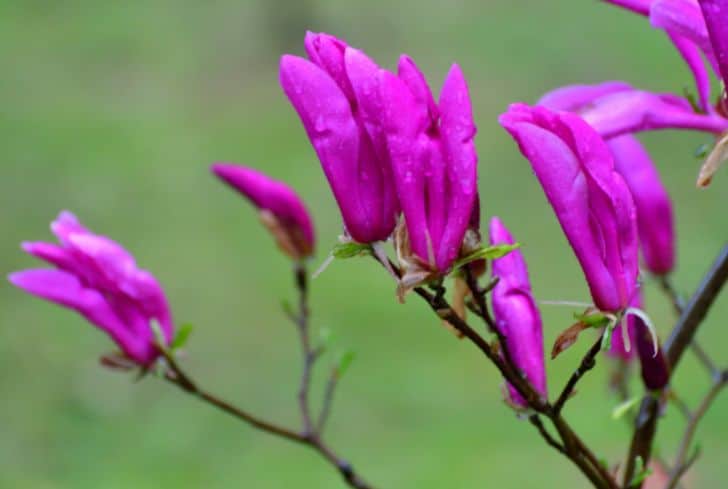
The Purple Lily Magnolia is a slow-growing tree that can take between 10 to 15 years to reach its full height of 10 feet. It grows between 6 to 12 inches per year and has a lifespan of about 100 years. The tree grows best in full sunlight but can tolerate partial shade if necessary.
This magnolia is an excellent choice for people looking for a small ornamental tree that does not take up much space and requires very little maintenance.
9. Japanese Snowbell Tree
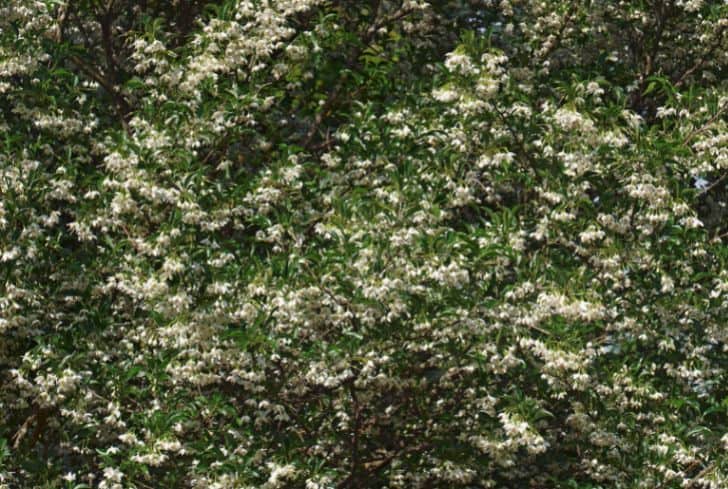
The Japanese snowbell tree (Styrax japonica) is a slow-growing tree that reaches a height of about 10 to 20 feet. It has glossy green leaves up to 4 inches long with serrated edges. The flowers are bell-shaped and white in spring, followed by black berries.
The Japanese snowbell tree is a slow-growing tree that can live for decades. It grows best in temperate climates but can survive in warmer areas with careful care. In addition, The tree is known for its beautiful white flowers and sweet smell, which it releases during the springtime. The Japanese snowbell tree is hardy in USDA zones 5 through 8a.
10. Fragrant Himalayan Champaca Tree
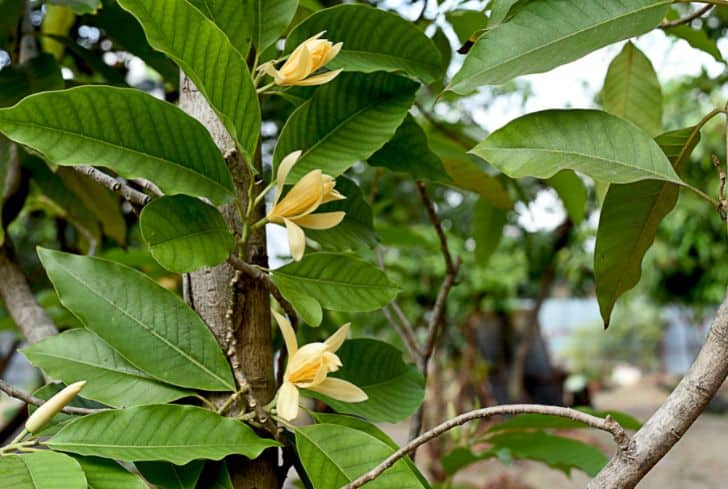
The Fragrant Himalayan Champaca is a slow-growing tree that can grow up to 25-30 feet tall. The Fragrant Himalayan Champaca tree is one of the slowest-growing trees in the world. It is native to southern Asia and Southern China.
Do Slow-Growing Trees Live Longer?
Yes, trees that grow slowly live longer than trees that grow quickly. This is because the growth rate is directly related to the number of nutrients in a tree’s root system. The slower a tree grows, the more time it has to store nutrients and the healthier it will be.
Slow-growing trees tend to be better able to withstand environmental stressors and other threats to their health. This is because they are more firmly established in their root systems, and their trunks are much thicker than fast-growing trees.
Additionally, trees live longer because they can survive for a long time without competing with other trees for resources. The slow tree can withstand harsh conditions and survive, which is why it lives longer than other trees.
Slow-growing trees can be found in places where there are no natural predators in the area. Lastly, slow growth gives a tree more time to develop roots deep into the ground, where it can find water when it needs it most.
Why Do Some Trees Grow Slowly?
Some trees grow slowly because they are not very healthy. An unhealthy tree might not have enough nutrients, water, or sunlight to grow quickly. Some trees might also be too young and need to wait until they are older before growing faster.
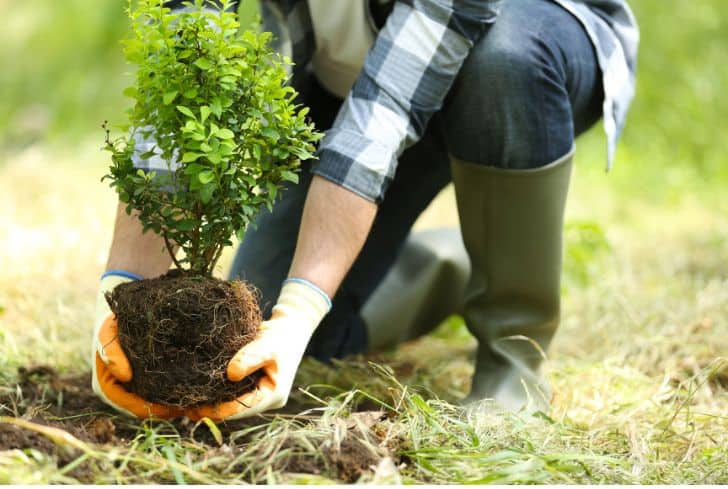
Below are some other reasons why some trees grow slowly:
Poor soil
Some trees grow slowly because they are in poor soil conditions. If your tree were planted in sandy or rocky soil, it would have a harder time getting enough nutrients from the ground to keep up with its needs for growth. When this happens, you may notice your tree’s leaves turning yellow or brown before dropping off completely.
Poor Environment
Trees also depend on the environment in which they are planted for survival and growth. If there is not enough rain or soil nutrients available in the area where a tree has been planted, then it may not be able to proliferate because its roots cannot get enough water or nutrients from the ground around them without help from humans.
Genetic rate
It is a fact that trees grow at different rates because of the genetic makeup of their species. Trees that are naturally programmed to grow fast will typically do so, while those with slower growth rates tend to keep pace with their genetic programming.
Temperature
Temperature is one of the most influential factors that affect tree growth. While it may seem obvious, the environment’s temperature can significantly impact how quickly a tree grows. Some trees can grow in a wide range of temperatures, but they have limits. Trees do not like hot temperatures. For trees to thrive, they need warm and moist conditions.
Can You Speed Up Tree Growth?
Yes, you can speed up tree growth with the help of a few simple techniques. You first need to ensure your tree is planted in an area with plenty of sunlight so it can photosynthesize properly. If your tree is planted in an area that gets very little sunlight, the leaves will not be able to produce enough food for the tree to grow at a normal rate.
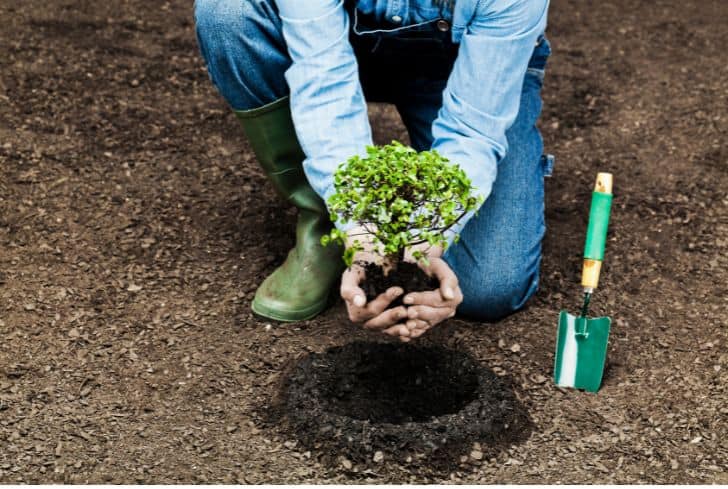
Below are some other techniques to speed up tree growth:
Choose the Right Species
There are many species of trees, each with unique needs and preferences. Some trees like more water than others; some prefer nutrient-rich soil, while others do best when planted in sandier soils. Certain trees grow better in full sun or partial shade.
Water Your Trees Regularly
Trees need water to survive, but they also need it to grow. If you want to see your trees grow as quickly as possible, ensure that you provide them with plenty of water.
Ensure Your Trees Have Enough Space To Grow
A tree that is too crowded with other trees and bushes will have difficulty growing because it will not have enough sunlight or water to thrive. If you want your trees to grow as fast as possible, ensure they have at least three feet of space around them.
Test Your Soil For Nutrient Deficiencies
If the soil does not have enough nutrients, it will be unable to support the growth of a healthy tree. The best way to determine if this is the case is by doing a soil test.
This can be done by taking a sample from several spots in your yard and sending it to a lab for analysis. The results will tell you what nutrients the soil is deficient in and which ones need to be added.
Conclusion
There are more than 4,000 species of trees in the world. These plants have adapted to thrive in a variety of habitats and climates. Their growth rate varies widely depending on their location and environment. While some trees grow quickly, others produce flowers or fruit for years.





